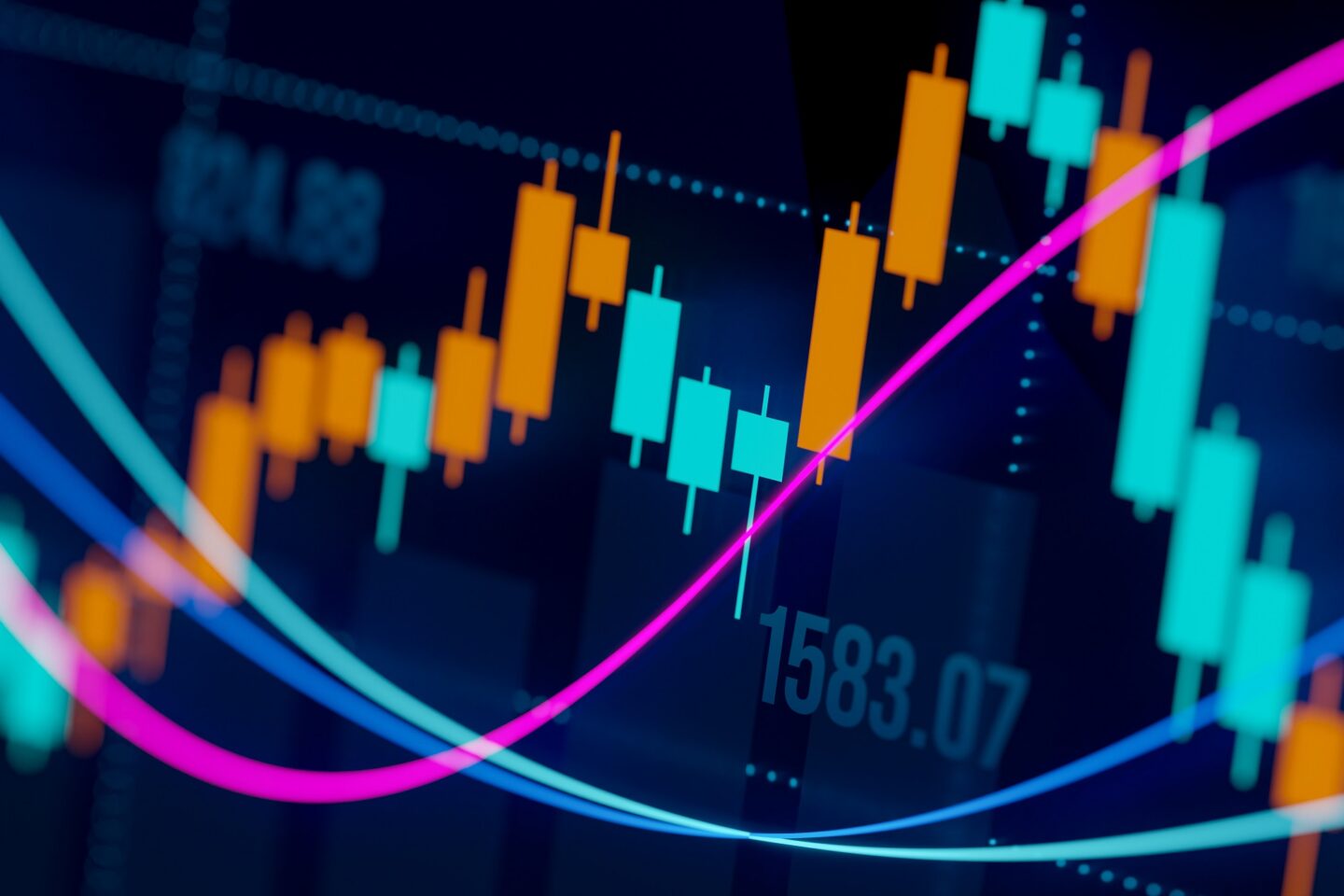
How to win over DE&I doubters and disruptors
Effective DE&I strategies are proven to enhance performance, yet they still face resistance – perhaps now more than ever. Here’s how to convince the naysayers....
Audio available

by Carlos Cordon Published February 7, 2025 in Geopolitics • 7 min read
Expect the unexpected. Now that Donald Trump has taken office as US President for the second time, this is the only practical advice to give supply chain leaders. The President’s track record – his whole modus operandi, in fact – defies attempts to anticipate his decisions and prepare a response.

Take trade tariffs. On the campaign trail, President Trump promised tariffs of 10-20% on imports from all countries, with a 60% rate reserved for China. Having triumphed in the election, he went on to warn the EU that it would need to buy more US oil and gas, or face “tariffs all the way.”
However, these figures are simply the basis for negotiation, the opening gambit from a President who, in politics as in business, believes in the “art of the deal” above all else. No one – likely including the President himself – knows at this stage what tariffs he will ultimately set. Supply chain managers would, therefore, be well advised to delay implementing new strategies based on rhetoric that may never translate into policy.
Similarly, on raw materials, President Trump wants to phase out all Chinese imports of essential goods, restrict the ability of US companies to invest in China, and revoke China’s “most-favored-nation” trade status established with the World Trade Organization (WTO). That puts pressure on US businesses to invest in domestic procurement. Potentially, it means excess capacity in China, with knock-on impacts for the EU and other markets.

“Given the heightened uncertainty, prices are going to be volatile; companies may find themselves stockpiling key materials one day and experiencing shortages the next.”
But is the President going to follow through on such proposals? “America First” may be a politically attractive strategy, but it is challenging from an economic and business perspective. Some of the Trump administration’s proposals on trade restrictions and regulation may even be illegitimate under current US law.
For supply chain leaders, charting a course through the reality show of the Trump Presidency is fraught with difficulties. Many businesses will feel compelled to react to each new announcement. Given the heightened uncertainty, prices are going to be volatile; companies may find themselves stockpiling key materials one day and experiencing shortages the next.
This erraticism from a global leader could be deeply problematic, hitting businesses’ margins and limiting their ability to maintain production. But it could also open up unforeseen opportunities. It may be possible to exploit a sudden fall in prices or, in certain markets, to increase sales. But business leaders should be quick to take advantage and ready to pull their horns in quickly. A capricious President can, without warning, slam the door of opportunity closed just as he can open it.
Under the Trump administration, they must be ready to respond to markets day-to-day, ensuring the business is sufficiently nimble to deal with each new challenge and exploit each unexpected opportunity as it arises.

Your business playbook for a shifting political landscape
Erratic, then, will be the watchword for business over the next four years. Supply chain leaders cannot sit on their hands – they will need to plan and react in a much more fluid, agile way than in the past. In such an uncertain operating environment, it makes sense to embrace the concept of “effectuation.” That is, businesses must be ready to act quickly using what is currently available to them, rather than assuming that a forecast change in conditions is imminent.
For supply chain leaders, used to planning based on forecasts, historical business cycles, and statistical analysis, this is an uncomfortable situation. Under the Trump administration, they must be ready to respond to markets day-to-day, ensuring the business is sufficiently nimble to deal with each new challenge and exploit each unexpected opportunity as it arises.

In this environment, businesses will not be able to work out of the traditional siloes, which, in febrile conditions, are too slow and inefficient. Rather, supply chain leaders will need to be open to collaboration with other functions, for example with enterprise risk, to understand market volatility, and, with manufacturing, to promote more data-driven and customer-centric product and service development.
A more holistic approach can promote the greater flexibility that, as we have seen, will be desperately needed to cope with life under the second Trump administration. Pricing is a good example: traditionally, large organizations have been wary of more dynamic strategies, preferring an annual price review that considers market changes over the preceding year. However, more progressive organizations have already moved away from this approach.
Looking at the electric vehicle (EV) manufacturer, Tesla, between 2019 and 2024, the price of its flagship vehicle dropped from $80,000 to around $50,000, having moved around significantly within that range over the whole period. Although on this surface this appears erratic, it also reflects Tesla’s ability to react quickly to shifts in the cost of raw materials and components, to the actions of its competitors, and to changing demand (and perhaps also indicates why Tesla’s CEO, Elon Musk, currently enjoys a place at the heart of the Trump administration). Few companies have the internal flexibility required to pursue this sort of hyper-adjustable pricing strategy, but to thrive under the second Trump presidency they may need to develop it.
CEOs will now be looking for options. They need a range of possible responses ready to respond to whichever one of a broad set of scenarios presents itself. Financial markets offer a range of products to help in this regard. Many manufacturers are already using futures and options markets to ensure they can buy different quantities of raw materials at known prices according to how the market environment unfolds.
Organizations will need to build on this concept, providing their CEOs with a menu of options, both financial and operational, from which they can choose quickly as challenges and opportunities emerge. Creating such a flexible, multi-option system will be costly, not least in terms of the options created that never get used. But the cost of being unable to react quickly to erraticism and volatility would be even greater.
Small, fast-growing businesses will doubtless find this adaptation much easier than their larger counterparts, who may have left such agility a long way back in their histories.
We are talking about a move toward instant supply chains. Businesses can no longer rely on single suppliers or individual countries or count on a new option being available whenever one is required. Supply chain managers must be ready to respond immediately, considering the prevailing costs, regulations, legal constraints, and other changing factors. Sourcing must be ready to pivot from China to Europe as requirements dictate, dropping and raising capacity with demand.
Small, fast-growing businesses will doubtless find this adaptation much easier than their larger counterparts, who may have left such agility a long way back in their histories. Nevertheless, the return to office of President Trump necessitates this change of mindset, so supply chain managers must limber up and get ready to react – because while this new, unpredictable administration can offer business bounty, it can snatch it away just as quickly.

Professor of Strategy and Supply Chain Management
Carlos Cordon is a Professor of Strategy and Supply Chain Management. Professor Cordon’s areas of interest are digital value chains, supply and demand chain management, digital lean, and process management. At IMD, he is Director of the Strategies for Supply Chain Digitalization program.

May 22, 2025 • by Josefine van Zanten, Luca Condosta in 2025 Trends
Effective DE&I strategies are proven to enhance performance, yet they still face resistance – perhaps now more than ever. Here’s how to convince the naysayers....
 Audio available
Audio available
April 22, 2025 • by D W Pine in 2025 Trends
Responsible for TIME magazine’s iconic covers, D W Pine explores his creative process and shares insights on how to cut through the noise and make an impact....

February 3, 2025 • by Natalia Olynec in 2025 Trends
Warnings about alcohol’s harms by medical experts are nothing new. But the drinks industry is now taking sobriety seriously by investing in a growing range of alternative products....

January 24, 2025 • by David Bach, Simon J. Evenett, Öykü Işık, Arturo Bris, Julia Binder, Knut Haanaes, Sophie Bacq, Jennifer Jordan, Sarah E. Toms, Natalia Olynec in 2025 Trends
Business leaders at this year’s World Economic Forum sought to block out the political noise and focus on what’s happening in the real economy....
Explore first person business intelligence from top minds curated for a global executive audience